BEAUMONT, Texas — 12News' Hurricane Headquarters and the National Hurricane Center are still keeping a close eye on tropical depression Nicholas as it moves through Southeast Texas.
As of 10 a.m. Wednesday, the center of Nicholas was moving slowly at about 5 mph east northeast with maximum sustained winds of 30 mph and was about 30 miles northeast of Lake Charles according to the National Weather Service.
The tropical storm warning for the Texas and Louisiana coasts were discontinued with the hurricane center's 7 p.m. Tuesday update.
The depression's east-northeast motion is expected to slow through the next 24 hours before a gradual turn to the north prior to dissipation.
Continued weakening is forecast during the next 48 hours with the center of circulation possibly becoming quite diffuse by late Thursday.
However, heavier rainfall will continue to remain a threat as tropical moisture persists across the Gulf Coast region.
Here's a live look at the current weather graphics info for Nicholas...
Nicholas made landfall around 12:30 a.m. Tuesday as a category 1 hurricane on the eastern part of the Matagorda Peninsula, about 10 miles west-southwest of Sargent Beach. In the 4 a.m. Tuesday update, the NHC downgraded it back to a tropical storm.
Forecast cone and timing

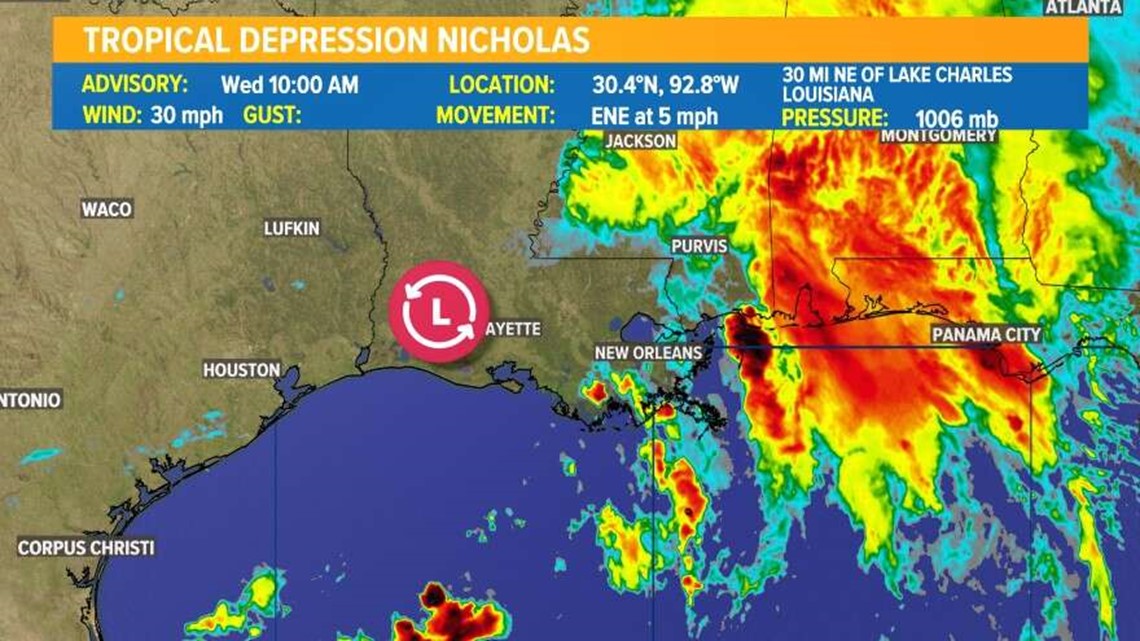



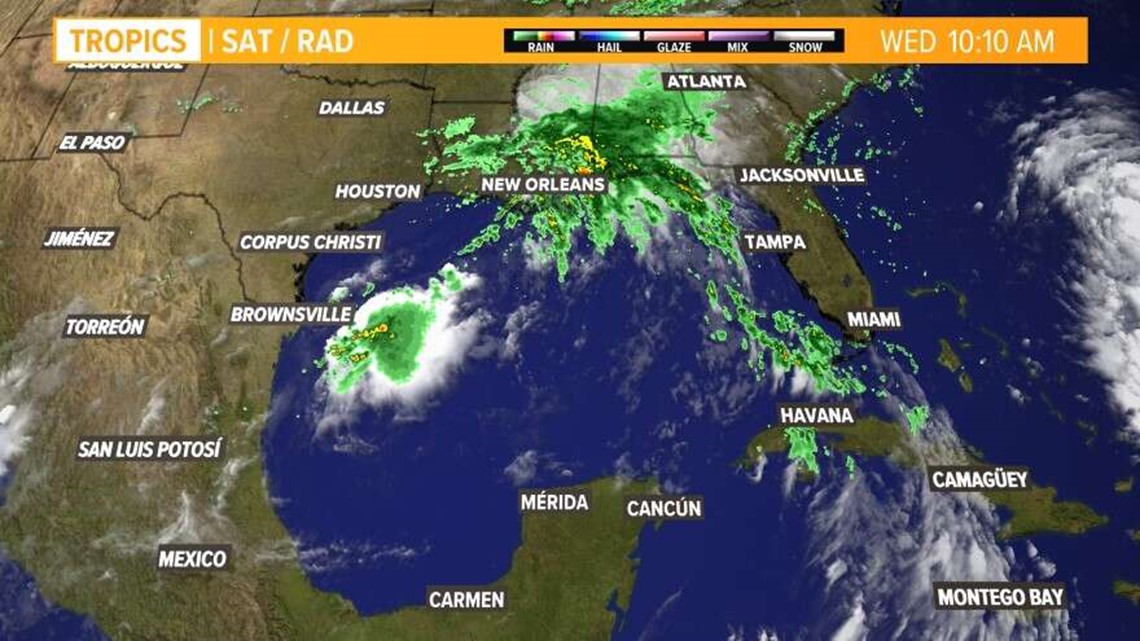
Tropical watches and warnings
- There are no coastal watches or warnings in effect.
As of the 10 p.m. Tuesday update all flash flood watches across Southeast Texas have been discontinued.

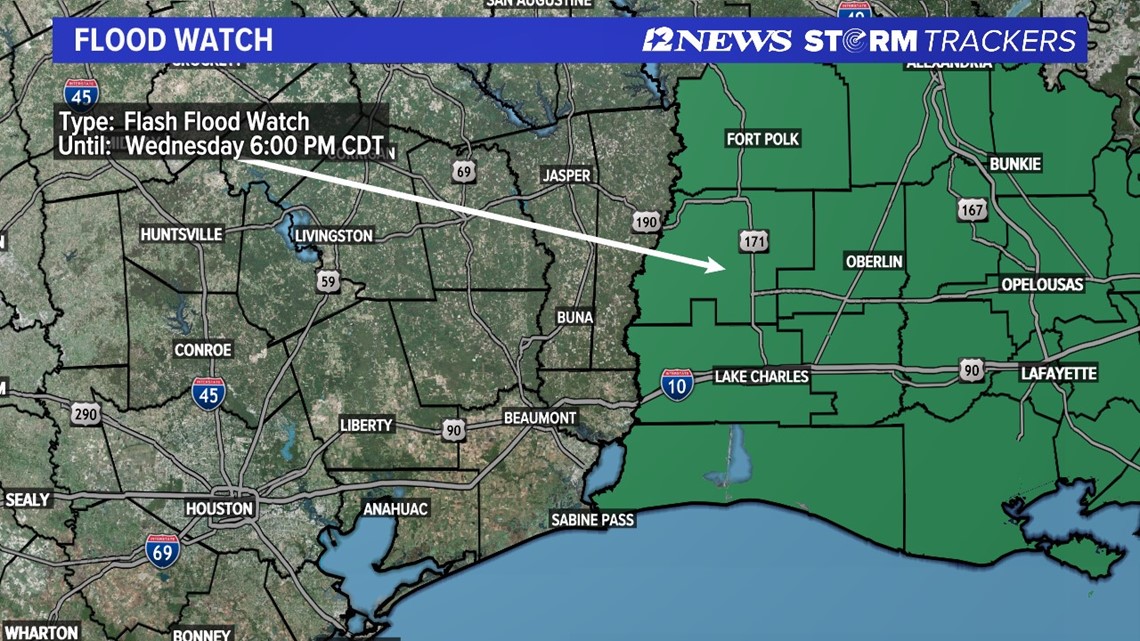
From the National Hurricane Center at 10 a.m. CDT...
At 1000 AM CDT (1500 UTC), the center of Tropical Depression Nicholas was located near latitude 30.4 North, longitude 92.8 West.
The depression is moving toward the east-northeast near 5 mph (7 km/h) and this motion is expected to slow through the next 24 hours before a gradual turn to the north prior to dissipation.
Maximum sustained winds are near 30 mph (45 km/h) with higher gusts over water and near thunderstorms.
Continued weakening is forecast during the next 48 hours with the center of circulation possibly becoming quite diffuse by late Thursday.
However, heavier rainfall will continue to remain a threat as tropical moisture persists across the Gulf Coast region.
The estimated minimum central pressure is 1006 mb (29.71 inches).
RELATED: Texas Cares: Hurricane Ida relief
2021 Hurricane Season Outlook
The 2021 Atlantic Hurricane Season is forecast to produce more storms than average. The reason for this is the lack of El Nino, which typically features more wind shear. We also expect warmer than average sea temperatures and an active West African Monsoon.

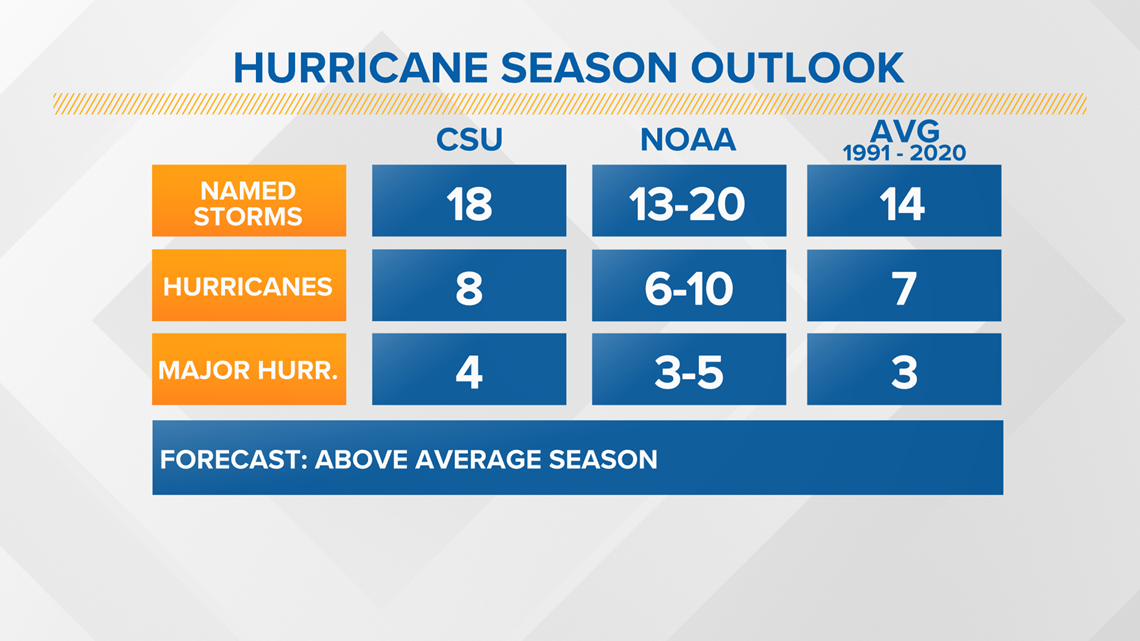
After a record-breaking 2020 hurricane season, we now know the Greek alphabet will no longer be used to name storms.
The World Meteorological Organization announced the Greek alphabet will not be used in the future because it "creates a distraction from the communication of hazard and storm warnings and is potentially confusing."
2021 Atlantic Hurricane Season Names

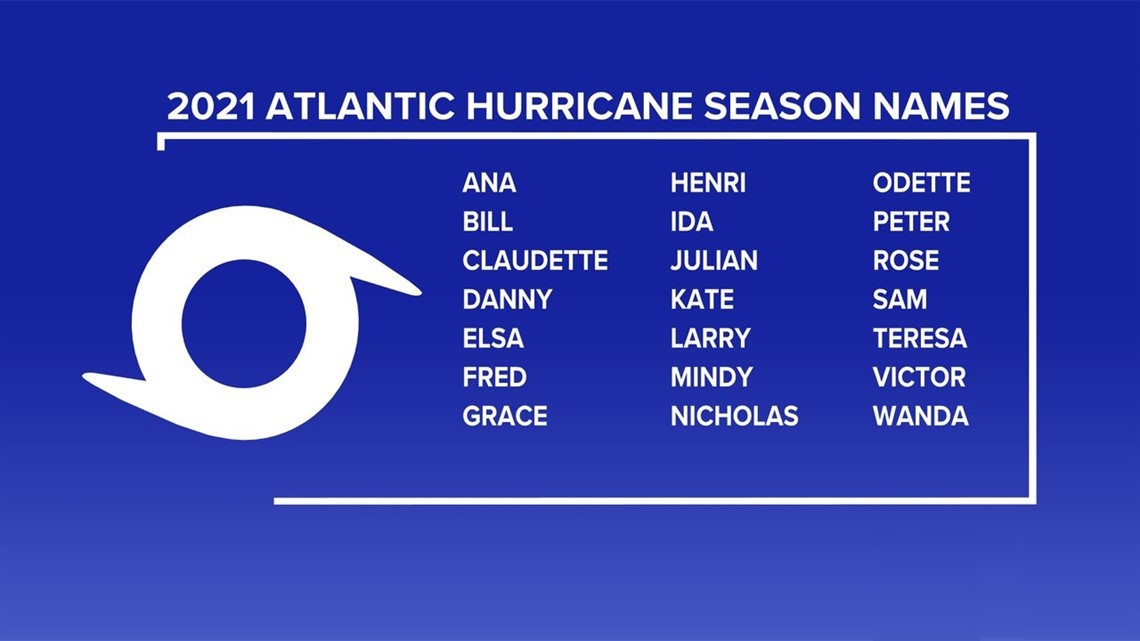
There has been only one other season that used the extra set of names, and that was in 2005. The World Meteorological Organization released a new set of supplemental names that will be used if the season exhausts the standard list.
2021 Atlantic Supplemental Hurricane Names

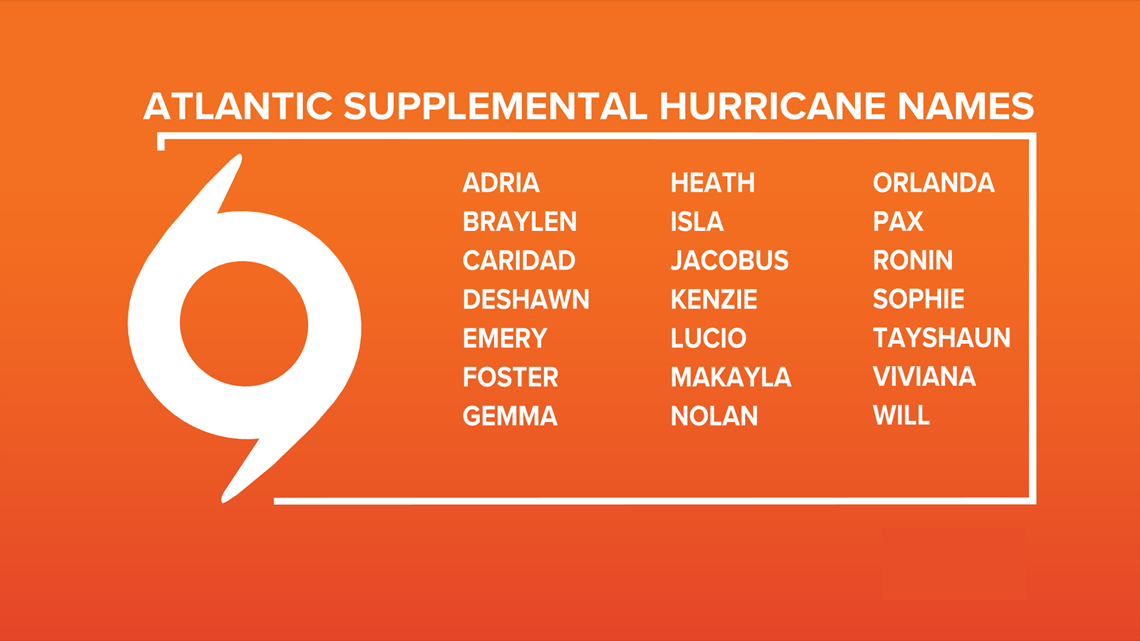
Be prepared if a storm comes our way
BEFORE THE STORM
- Make a home inventory
- Have a current copy of your declarations page that has your policy number and your agent's number
- Review your policy with your insurance agent to determine if you have adequate coverage
- Repair loose boards, shingles, shutters and downspouts to prevent them from becoming an issue in high winds or torrential rain
- Have an evacuation plan, and include plans for your pets
- Make sure your emergency equipment is in working order, including a battery-powered radio, flashlights and extra batteries. Also, make sure to gather all medicine, replenish your first-aid kit and stock a week's worth of non-perishable food and water
- Charge your cell phone and fill your car with gas
- Program all emergency phone numbers
DURING THE STORM
- If you are advised to evacuate, leave as soon as possible. Retain all related receipts - they may be considered in your claim. If you aren't in a recommended evacuation and you plant to stay home, stay informed by listening to weather alerts
- Keep windows and doors closed at all time, and, if possible, board them up with wooden or metal shutters
- Stay away from the windows and in the center of the room, or, stay in an interior room
- Avoid flood water, as it may be electrically charged from downed power lines
- Check on family members and friends
AFTER THE STORM
- Check to be sure your family members are safe
- If you did evacuate, wait for official notice that it is safe to re-enter your neighborhood and your house
- Document damaged property, and take photos and videos. Don't dispose of any damaged items without approval
- Keep a record of any temporary repairs or expenses to prevent further damage to your property.
GET NEWS & WEATHER ALERTS | Download the 12News App to your mobile device


